The 6 Most Politically Incorrect Video Game Moments
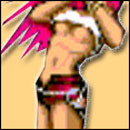
As much as we love Japan, they do seem to be about 30 years behind the rest of the world in the area of political correctness.
And while it may be wrong to stereotype Japan in an article about cultural insensitivity, we can't help but notice their domination of the game industry has led to some hilariously cringe-inducing moments. We're talking about games like...
Vendetta (1991)

In the Japanese version of this Sega Genesis game, men clad in leather chaps and a bushel of chest hair daintily stroll up to your character and attack. And when we say "attack," we mean "dry hump you from behind."

If there are two of these leather-clad enemies on the screen simultaneously, the other one will sometimes hump a light pole until the bulbs drop on his head, bludgeoning him.

Gay or straight, if two people are so horny that they're willing to risk their lives to have intercourse with a light pole, wouldn't common sense dictate that they'd just have sex with each other instead? And what does that say about the one guy who continues to probe a stranger's anus while he watches his friend die from blunt trauma to the skull?
Maybe he's just afraid of the poison that seems to coat the genitals of gay men in Konami's Vendetta universe (your life bar drains substantially with each thrust of the attacker's hips).
Almost As Bad...
While Vendetta really set the bar for unrealistically flamboyant portrayals of male homosexuals, Sega's Bare Knuckle 3 (Streets of Rage 3 in the US) couldn't back down from the challenge. Thus, they gave us Ash.
He slaps. He cries when he's defeated. He strikes effeminate poses, covers his mouth while giggling and bends his knees inward, all while looking every bit the Village Person.
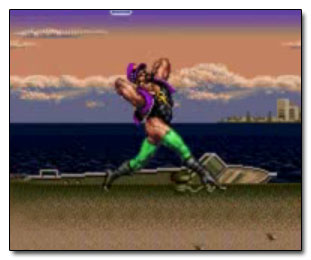
Yet, you can measure the progress of Japanese game developer attitudes toward homosexuality by the fact that in a game made three years later, the gay character no longer humps you to death.
Square no Tom Sawyer (1989)

Nintendo of Japan licensed Square no Tom Sawyer (Square's Tom Sawyer), a role-playing game developed by the future makers of the Final Fantasy series, meaning that it had met Nintendo's rigorous standards of quality. . . blackface and all.

Square no Tom Sawyer was never released in America, probably because an acute Square executive commented, "Someone, maybe an African-American, may find the blackface on Jim offensive." Hey, better safe than sorry, right?
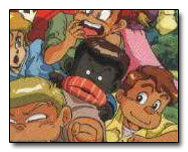
Almost As Bad...
In 1989, SETA combined racism and incoherence to get The Adventures of Tom Sawyer for the Nintendo Entertainment System.
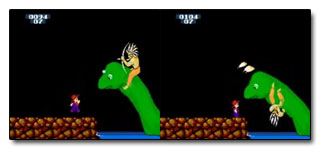
Thankfully, there is no blackface in this adaptation. SETA opted to replace all of Twain's subtle commentary on racial inequality with giant alligators, zombies and gnomes. But then, Tom lands in what is either an underground lava cave headquarters, or Hell itself. There he encounters an American Indian straddling an enslaved brontosaurus:
A few well-thrown projectiles were enough to send the filthy Injun to a watery death. The game then cuts to a young boy apparently reading these adventures in a book, his face frozen in a priceless expression of childish wonder.

"What the fuck did I just read?"
Gekisha Boy (1992)

In Gekisha Boy, a young man, still reeling from the deaths of his parents, finds himself failing photography school. The dean offers him a last-ditch test where his academic career hinges upon the quality of the unusual snapshots he takes.
According to Gekisha Boy, this includes: flying saucers, wind gusting up a decades-deceased Marilyn Monroe's dress and all sorts of African-Americans.


Maybe you could forgive the idea of photographing blacks as if they are exotic creatures to be glimpsed in the wild, but you'd still have to deal with the fact that in the world of Gekisha Boy, African-Americans only come in three varieties: street pimp, prostitute and Michael Jackson.
Almost As Bad...

A word of advice to all future game designers: If one of your characters has even a passing resemblance to Mickey Rooney from Breakfast at Tiffany's, you have a problem. Witness this cutscene:
If you're thinking the graphics there are a little too good to be from the "They Didn't Know Any Better" era of old school gaming, you're right. This is 2003's Kung-Fu Chaos, for the Xbox. And we can't blame Japan for this one, since it's from Cambridge-based developer Ninja Theory.
Thankfully, their attempt to use technology to break new ground in cringingly awkward character interaction mercifully cuts off soon after the "tiny sausage" jokes begin.
Grand Theft Auto: Vice City (2002)
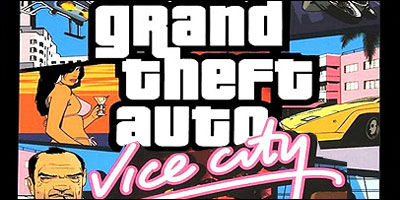
While we're on the subject of western developers, Haitian and Cuban communities both protested the content in Rockstar's Grand Theft Auto: Vice City, especially in missions such as "Dirty Lickin's."

The mission features a Haitian gang leader, Auntie Poulet, who uses her Voodoo powers and some hallucinogenic drugs to force protagonist Tommy Vercetti to slaughter all the Cubans on the street outside.
As upsetting as it usually is to hear someone advocate small-scale genocide, by this point in Grand Theft Auto: Vice City you've already performed a drive-by in a golf cart and chased an obese man down a public street while wielding a chainsaw. So to be fair, we're not even sure the word "genocide" means anything in a game where you accidentally kill two people every time you back up your car.
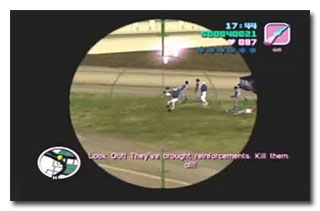
Almost As Bad...
Twelve years earlier, Kaneko released DJ Boy for the Sega Mega Drive (the Japanese Genesis) and gave us a first level boss who was a large woman with exaggerated facial features named Big Mama. She had a different kind of Voodoo, and by that we mean a fireball would shoot out of her anus on command.

Holy shit! It's one thing just to perpetuate your grandfather's decades-old stereotypes, but it's another thing to make up a new one. This is one area where we really don't need innovation, Japan.
Punch-Out!! Series

The classic Punch-Out!! boxing games are interesting, in that you saw where Nintendo drew the line on what they considered offensive. For instance, when still in the arcades, Super Punch-Out!! introduced players to Vodka Drunkenski, a perennially inebriated Russian who guzzles his namesake between rounds.

Nintendo thought better when they transported it to the NES as Mike Tyson's Punch-Out!!. They turned Vodka Drunkenski into Soda Popinski.
However, that doesn't change the fact that the entire game involved fighting a string of wacky cultural stereotypes. So the game still featured a weak, cowardly Frenchman named Glass Joe, an effeminate Spaniard named Don Flamenco and Great Tiger, an Indian whose turban flickers when he's susceptible to an uppercut (a stereotype the people of India have fought long and hard to shed).
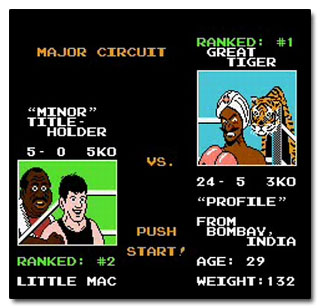
From the looks of the trailer of the newest installment of Punch-Out!! for the Wii, Nintendo has finally learned its lesson.
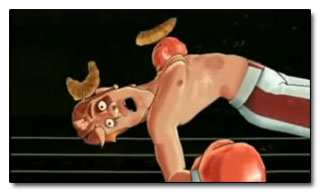
Now Little Mac can literally punch the croissants out of Glass Joe.
Almost As Bad...
In another classic sports game for the NES, RBI Baseball, everyone is white, including the African-American players.
You automatically think that it must have been some kind of technical limitation. After all, it was 1987 technology and it's not like Nintendo was completely unfamiliar with the concept of black people playing sports. But you can't avoid the fact that while the programmers successfully varied the colors of the uniforms, they were somehow unsuccessful in determining how to do the exact same thing for Kirby Puckett's face.
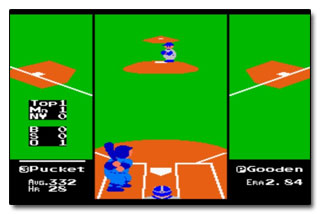
Custer's Revenge (1982)

If you had heard of Custer's Revenge, you already knew it was going to take the top spot. We're guessing that if video games continue as an art for 100 years, this one will still not have relinquished its throne.

In fact, perhaps nothing in the world of political incorrectness will rise to the level of this game, and it did it all in about six seconds of gameplay:
Oh, yeah, that's General Custer's huge, flopping erection, and this game is a American Indian rape simulator.
Almost As Bad...
By 1989 we were all more sensitive to the idea of violence toward women, so when it came time to translate the arcade game Final Fight to the Super Nintendo, some took issue with the fact that you were frequently pounding on two female enemies named Poison and Roxy.

They even revealed a large measure of underboob cleavage when struck:
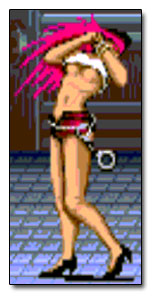
Staff at Capcom objected to the heroes brutally thrashing the ladies and, if we may say so in an article about offensive cultural generalizations, the designers came up with a uniquely Japanese solution: They decided that Poison and Roxy were actually transvestites or, possibly, that they had both male and female genitalia. You know, because then it would be okay to pound them.
The technology wouldn't allow it back then, but man, that plot point could have made for some of the most entertaining cut scenes of all time.
For games that may have been PC but went above and beyond the call for gratuitous violence, check out A History of Violence: 6 Old School Games as Brutal as GTA. Or find out which video game developers sold their souls in The 10 Least Subtle Product Placements in Video Game History. And be sure to visit Cracked.com's Top Picks to see what we're looking at instead of working.